The Lake Issue
Very Shady Shade Balls
Geoengineering genius or publicity ball pit?
3/14/2016
On August 10th 2015, the Los Angeles Department of Water and Power, a.k.a LADWP, released a news headline that read: MAYOR GARCETTI ANNOUNCES COMPLETION OF INNOVATIVE ‘SHADE BALL’ COVER PROJECT AT LOS ANGELES RESERVOIR. According to the article, LA’s “environmentalist” mayor, Eric Garcetti had just released his last 20,000 shade balls into the city’s primary open-air reservoirs, creating a shimmering media spectacle of shiny black spheres, bobbing and floating in some of California’s largest man-made lakes.
More than 96 million shade balls have been released into the Los Angeles’ surrounding reservoirs.
For a full month in August, #shadeballs graced every major media outlet in the country, from National Geographic to the New York Times, and every environmental blog and punny tweet in between.
The main arc of the #shadeballs story is this: Over the last few years, more than 96 million shade balls have been released into the Los Angeles’ surrounding reservoirs to allegedly help prevent evaporation and algae growth, and in turn, save the city nearly 300 million gallons of water annually. Back in 2015, the story was largely spun as an innovative new idea to help ease California’s ongoing drought.
The virality of the stunning visuals from this gothic environmental PlayPlace, mixed in with the ominous narrative of climate change had people worldwide asking: What is a shade ball? What are they doing there? Where did they come from? I decided to take a look:
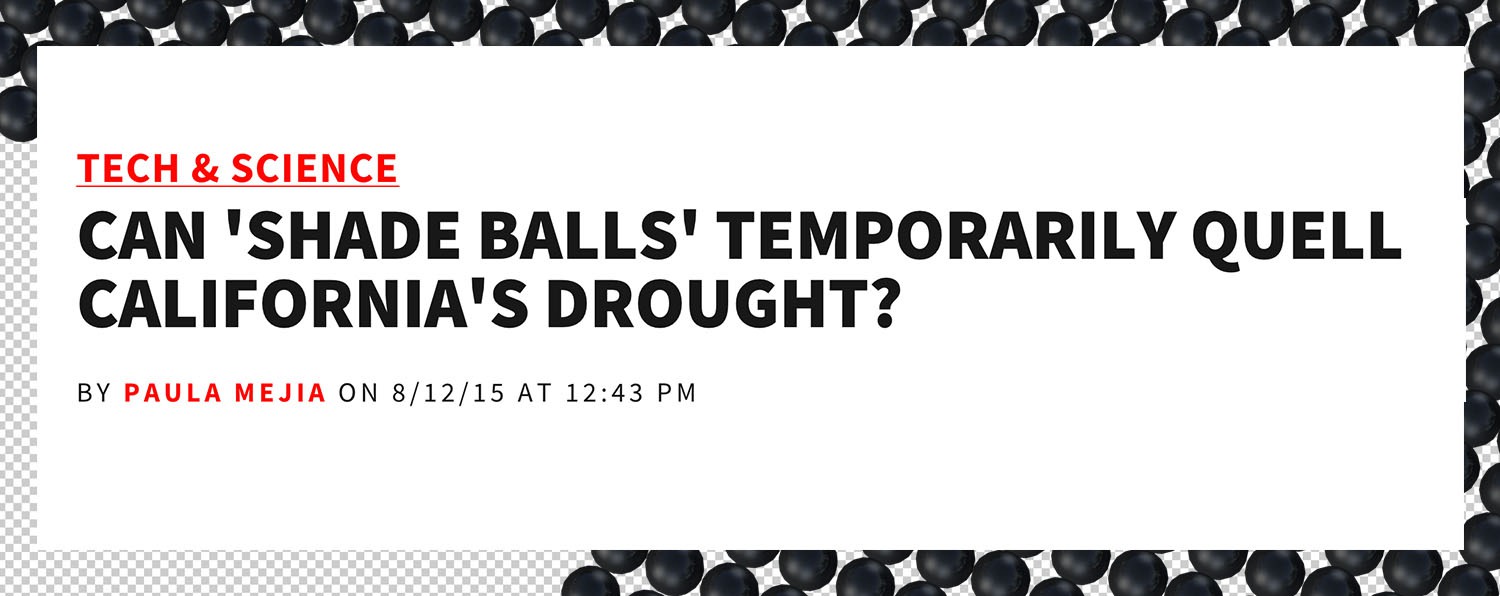
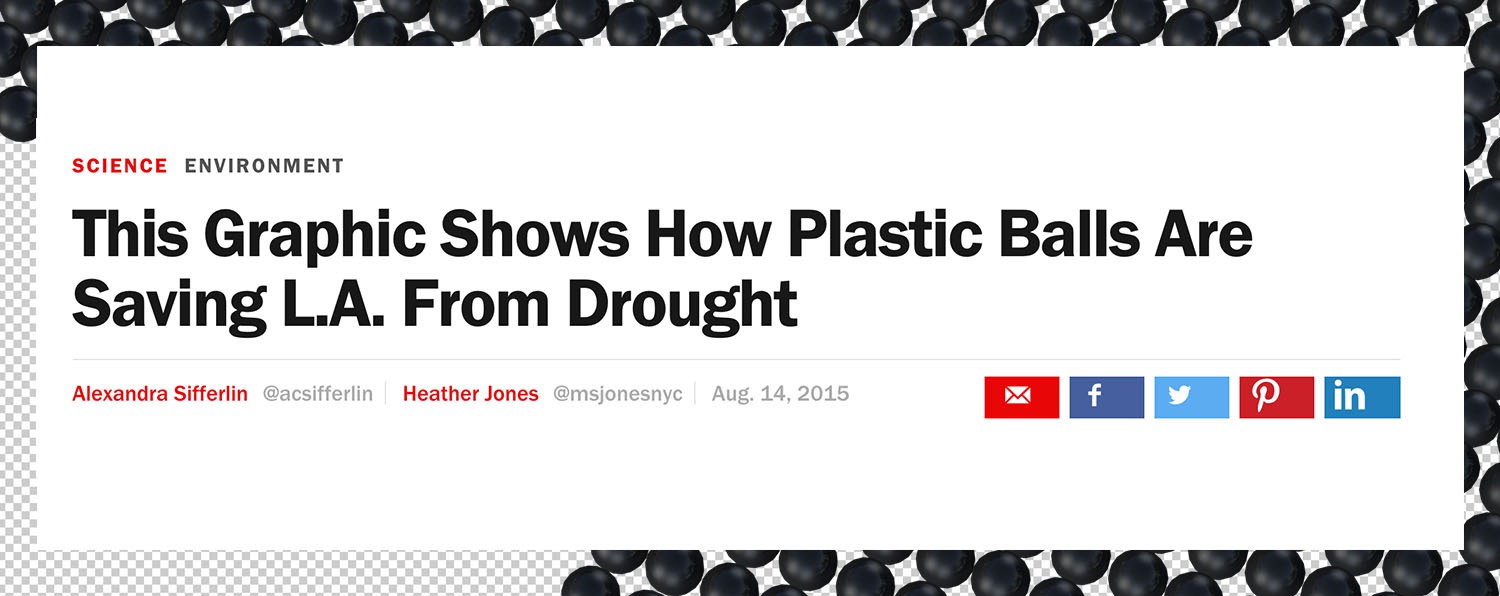
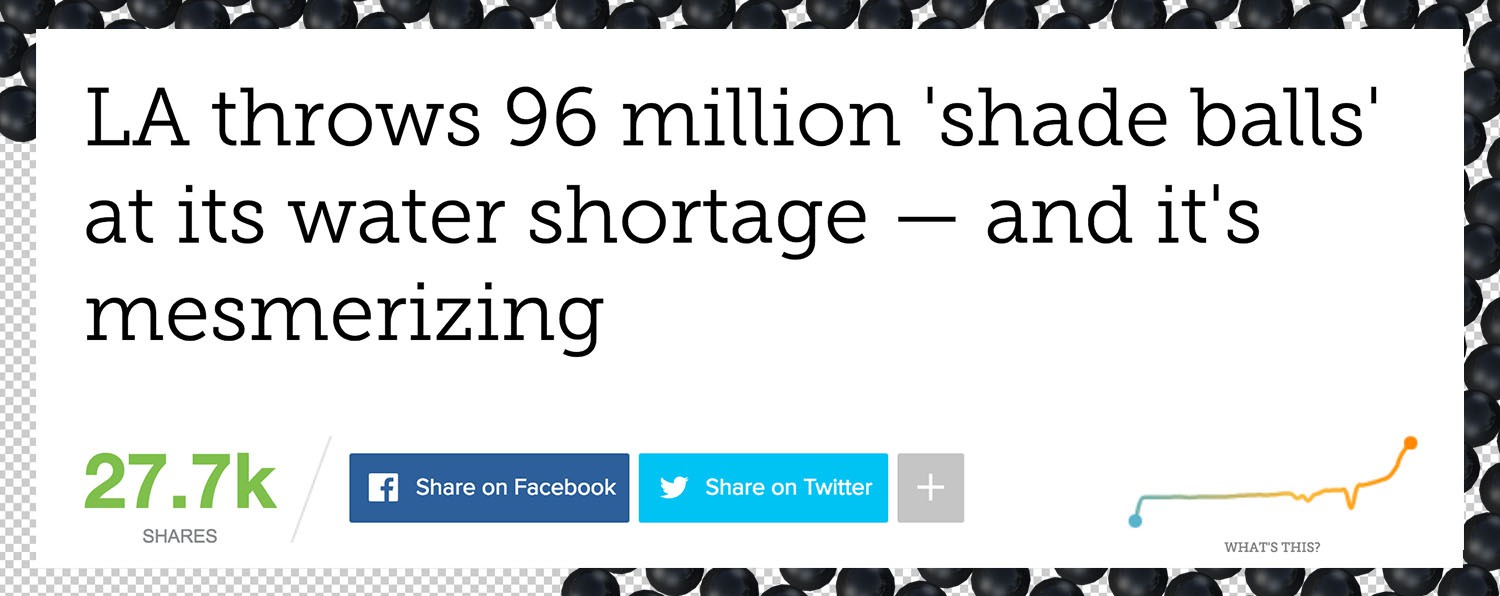
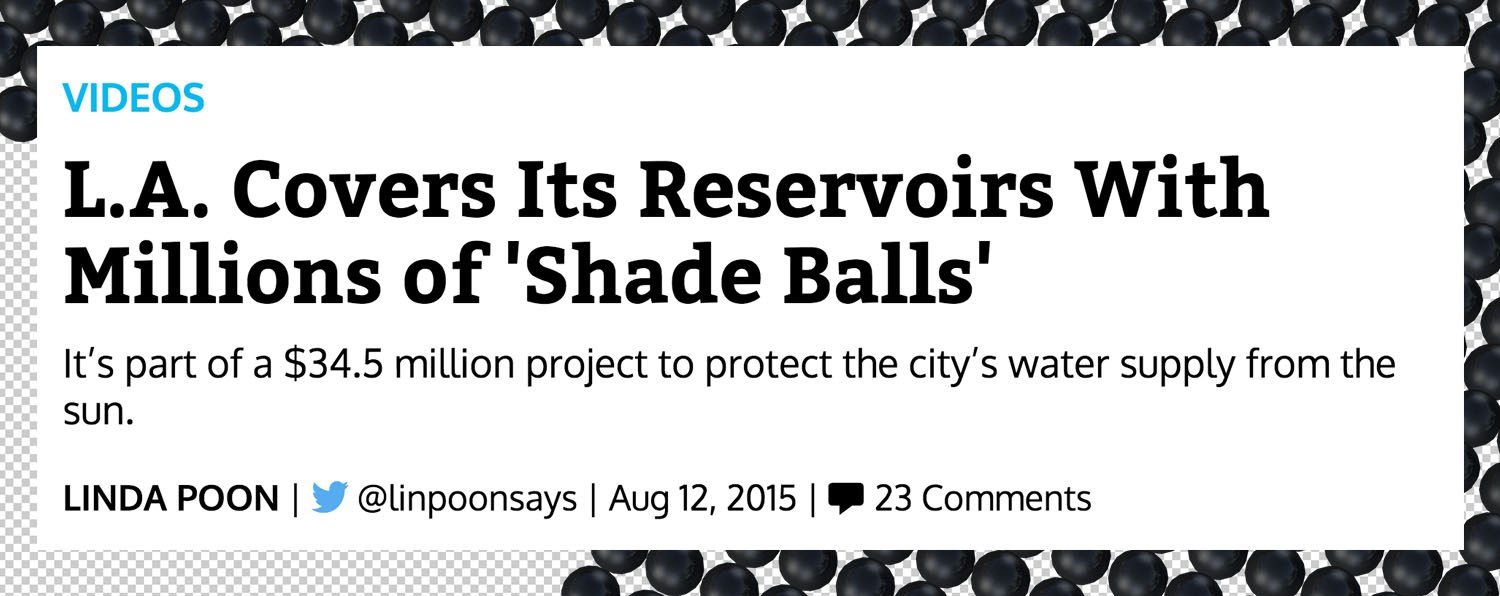
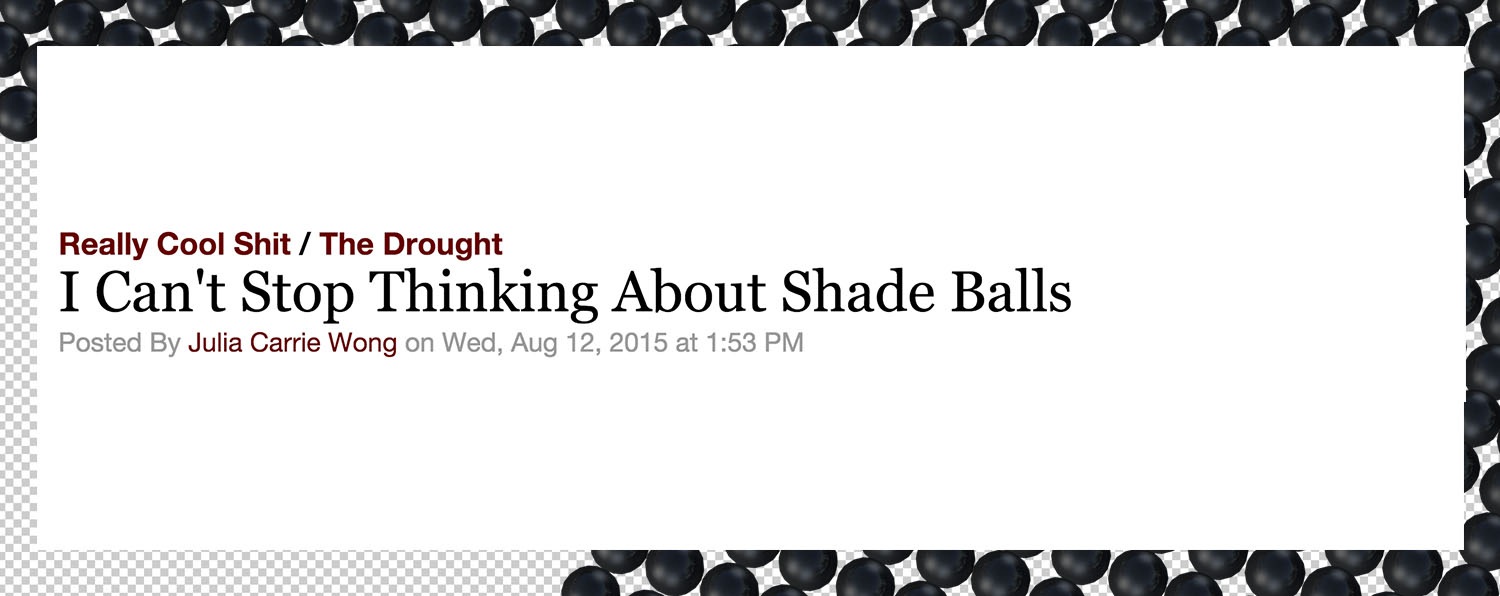
Prior to the current eco-conscious definition of shade balls came about last year, the Urban Dictionary defined a shade ball as:
shadeball (top definition): (n) A person who is so shady, they have become "shade" in physical form.
Today, we know “shade balls” as four-inch diameter, hollow black polyethylene balls that have a bit purified water inside of them to help hold them down in the wind. But here’s the thing: the more nuanced definition of shade ball didn’t surface until 2015; even though these little black balls have actually been floating in LA’s reservoirs since at least 2008.
Two main media outlets (LA Times and Tree Hugger) covered the initial shade ball story back then (note: this is still during social media’s infancy). The headlines read: “Los Angeles Drops 400,000 Balls in Reservoir to Fight Suspected Carcinogen.”
This suspected carcinogen was Bromate, a dangerous chemical that had recently been discovered in the LA water supply.
The 2008 articles don’t mention anything about evaporation, nor do they refer to the spheres #shadeballs. Back then, they were just “floating plastic balls” on top of a body of “water [that] needs to be shaded” in order to “fight a suspected carcinogen.” This suspected carcinogen was Bromate, a dangerous chemical that had recently been discovered in the LA water supply.
Bromate is formed by a chemical reaction that arises when sunlight comes into contact with bromide and chlorine, which are currently used to help treat the LA water supply. According to scientists, the easiest way to get rid of bromate in the water is to remove one of those three ingredients. That’s where carbon shade balls came in, forming a cover over the city’s drinking water dark enough to reflect much of the UV rays that were contributing to the dangerous chemical reaction, something like the water having a spherical SPF one million sunscreen.
However, after doing a little bit more research, I found out these little black balls were used on a widespread basis in the United States even before 2008. This time, they weren’t used to prevent evaporation or even to prevent bromate-forming chemical reactions. They were used to help prevent one of the biggest natural barriers to effective human-avian travel. Enter “bird balls.”
According to the US Air Force website, The Fairchild base in Spokane, Washington started using almost identical water-filled black spheres as early as 2003 to help prevent birds from hitting and jamming up their aircrafts. The idea was instituted after a particularly bad year of avian-airport accidents in the area.
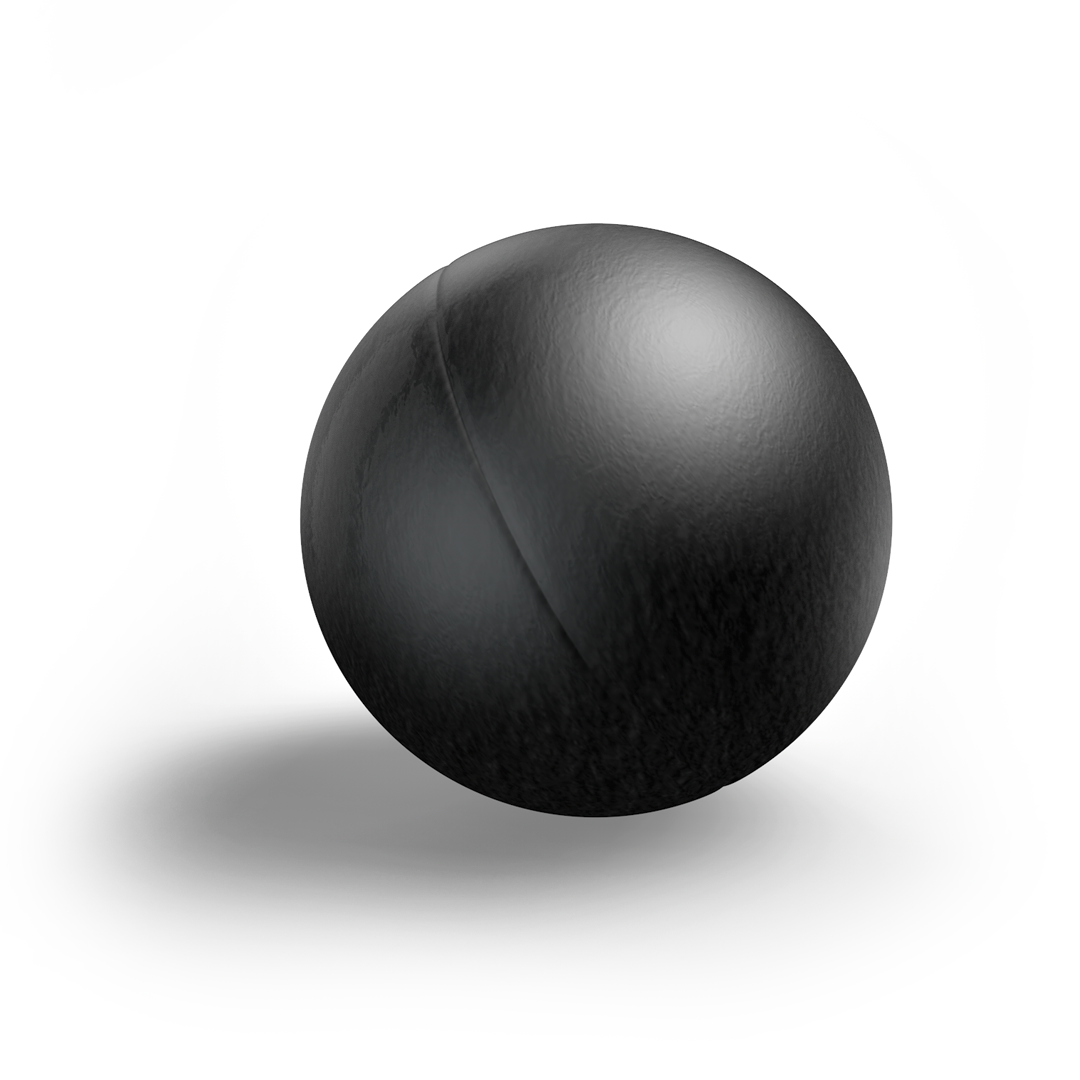
How many ways can you spin a black plastic ball?
“The new tool, part of the 92nd Air Refueling Wing bird-aircraft strike hazard program, uses small, environmentally safe, black balls to cover the surface of the water on the drainage ditches near the flightline,” their website reads.
But hey, let’s go back even further. Prior to the Air Force, the San Francisco International Airport actually seems to be the first large-scale entity to implement the use of black plastic balls in 2001. A CNN news article from the time introduces “bird balls” (sans the catchy name) like this:
“San Francisco International Airport uses a more environmentally friendly means of getting birds to get lost. The ponds around the airport are covered with 80,000 rubber balls to ward off ducks.”
Bird balls.
So now that we know where they came from, we ask: How did “shade balls” “bird balls” “cancer balls” or whatever you want to call them, get into LA’s reservoirs and reach astounding internet virality in 2015?
It turns out, the co-oped “bird ball” for shade ball idea is largely owed to Brian White, PhD, the now-retired LADWP biologist who first suggested that black balls be used by the LA water department in 2008 to help address the bromate carcinogen problem. Coincidentally, that’s the same year the EPA also mandated that open-air reservoirs housing drinking water must be covered.
From an onlooker’s perspective (mine), the physicality of these black balls/bird balls/shade balls are exactly the same throughout their almost 15 years of use in California’s environmental efforts. So if the ball didn’t change, then what did? What happened between 2008 and 2015 that altered the discourse of these shade Balls from a carcinogen-preventing cover to how “California Is Throwing ‘shade balls’ at Its Drought Problem”?
Well, for one thing, the recent California drought happened. Climate change has become only an ever more increasingly acceptable and trendy topic to discuss in the mainstream media. Perhaps the LADWP focused on these mesmerizing millions of floating black balls to create a poignant symbol of our changing world, and what they were doing about it. A meme with meaning, shall we say, something that media could latch onto.
Or maybe this was all the result of a very strategic PR move (or a clever intern) hoping to get the general public talking about the California drought. Either way, #shadeballs continue to float on in some of LA’s largest freshwater reservoirs, preventing cancer, avian disasters, climate change and whatever we can think up next.
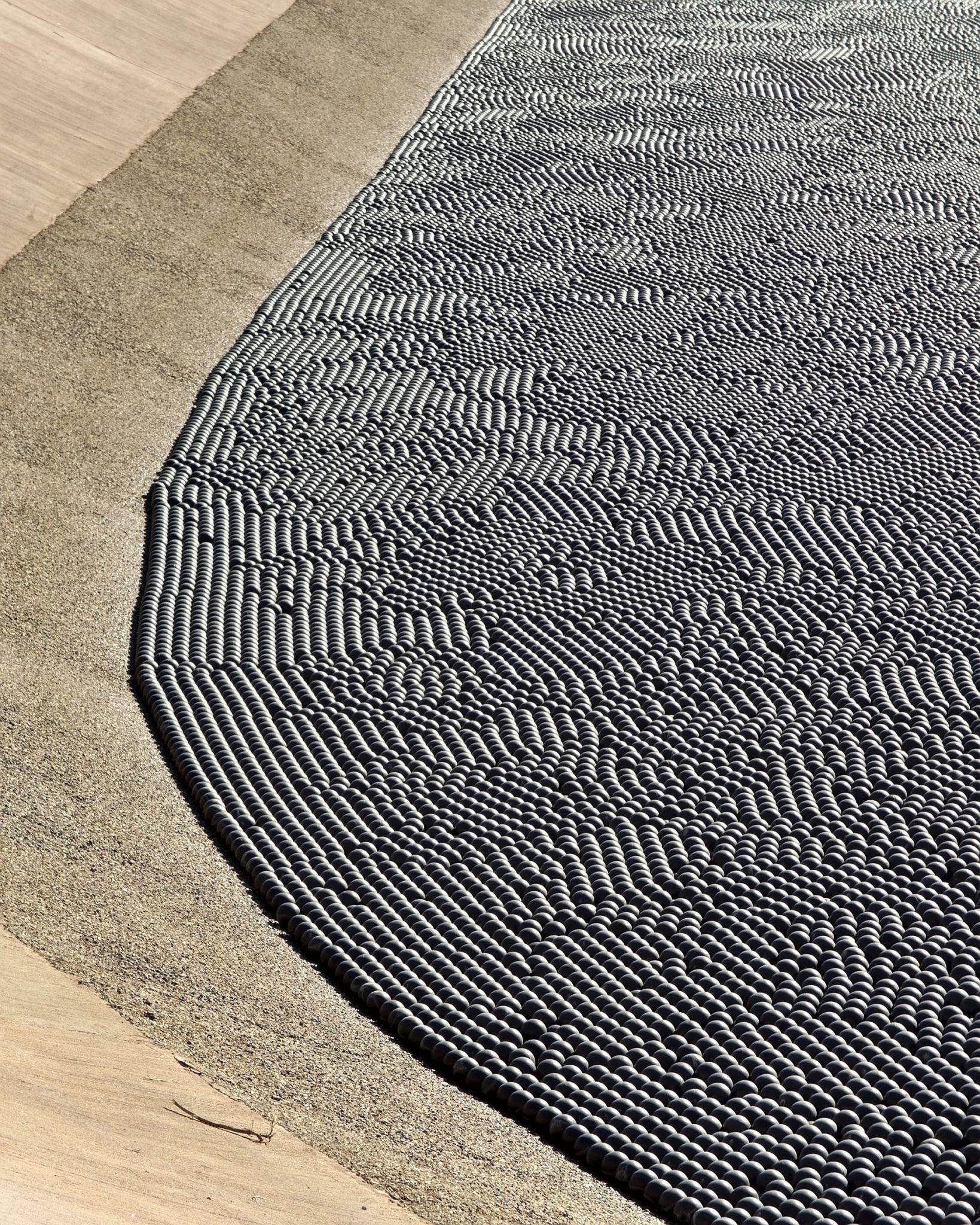
Sophia Callahan is a researcher and maker based in New York. Her work explores varying understandings of time through personal histories and communal ideas of the present and future.